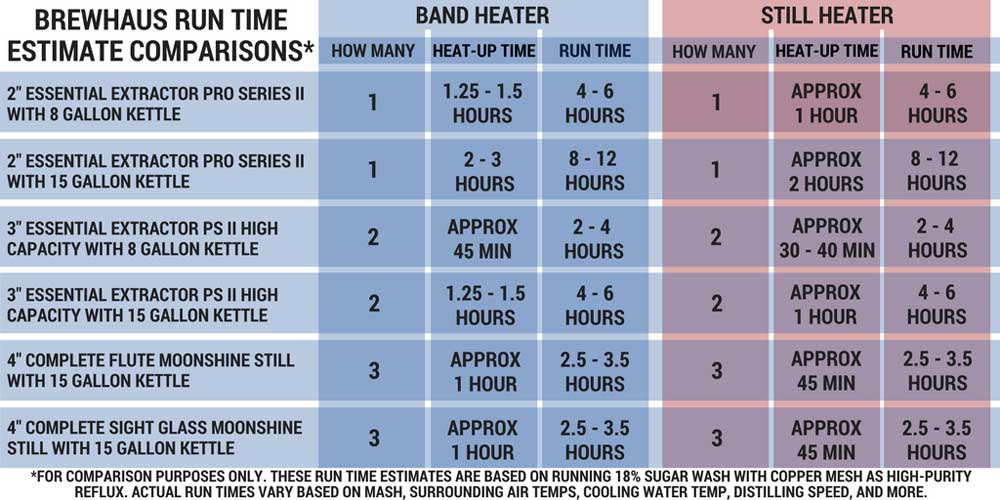Still Run Time Comparisons

One of the most common questions we’re asked is how long it takes to do a run with one of our moonshine stills. This question is much more complicated than it sounds because so many different factors impact your run time, from the mash itself to your surrounding air temperature while distilling, the temperature of your cooling water, the speed of water flow through your cooling lines, the type of distillation you’re performing, and more.
Run Time Estimates
Even so, I understand that it would be helpful to have an idea of how much time a 4” moonshine still could save you over a 2” or 3”. It’s also handy to know how many heating elements you need in order to make the most of your column’s capacity and speed. So we made the chart below for comparison purposes based on a high-purity reflux distillation with an 18% sugar wash, using copper mesh in the 2” and 3” columns, and using the built-in copper bubble plates in the 4” columns.
I really want to emphasize that the run times on this chart are estimates. There is no “one-time-fits-all” in distilling. However, you can see that with enough heat, our 3” columns can run approximately twice as fast as our 2” columns, without sacrificing purity. Our 4” flute and sight glass columns run a little less than twice as fast as the 3” columns.
Still Run Time and Heating Elements
We used our electric Band Heaters and Still Heaters for this comparison firstly because we always recommend electric over gas heat. Some customers prefer gas heat, which is why we offer an aluminum diffuser plate to help protect the bottom of your kettle. However, gas heat can be unpredictable and inconsistent, and consistency is key in getting the best product.
We also generally don’t recommend hotplates because they are known to cycle on and off, which doesn’t provide you with a consistent temperature during distilling. Although there are workarounds to adapt a hotplate in order to bypass the thermostatic control, it can be a bit risky and voids your warranty on the hotplate. A hotplate would also be crushed under the weight of one of our 4” columns with a full 15-gallon kettle, which is another reason why we did not include it in our chart.
I hope this answers your questions! If there’s something that I missed, feel free to let me know by contacting us or sending us a message through Facebook.









Comments